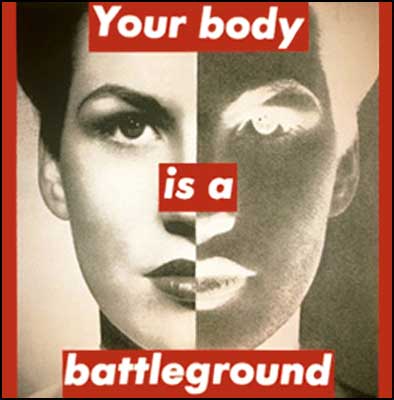 |
||||
|
Theorizing Feminism and Postmodernity
A Conversation with Linda Hutcheon
By Kathleen O'Grady - 1997.
IntroductionSo much of contemporary critical theory alienates the uninitiated and exasperates even the most determined reader. And postmodern commentaries, which promise to unlock the mysteries of the movement, often make better doorstops or coffee-coasters than easy entries into the twisted and lugubrious passageways of postmodernist thought. Contemporary feminist theory has not always been free from this tendency either. Linda Hutcheon, one of the most respected and renowned of Canada’s theorists, has long been known to dismiss this proclivity with an easy shrug of the shoulders. Her extensive writings, both on postmodernity and feminism, provide lucid and succinct analyses of the most slippery of topics -- parody, irony, aesthetics -- and do not stop there. In each work she adds her own valuable insights from her background in literature, her interest in art and architecture, and her understanding of contemporary philosophy. With such a diverse background it is often difficult to characterize her work with a single title. She is known by many to be a "cultural theorist" or "literary critic," by others as a "feminist"; some think of her as an "art critic," while she is often seen to be "a specialist in Canadian literature"; others still, think of her as a "philosopher" in her own right. Of course, it is likely true that she is all of these things, and more. What is not disputed is that her writings are always engaging, dynamic, and above all else, prolific. Linda Hutcheon is Professor of English and Comparative Literature, at the University of Toronto. Her theoretical works include A Poetics of Postmodernism: History, Theory, Fiction; The Politics of Postmodernism; Narcissistic Narrative: the Metafictional Paradox; A Theory of Parody: The Teachings of Twentieth-Century Art Forms; The Canadian Postmodern: A Study of Contemporary English-Canadian Fiction; Splitting Images: Contemporary Canadian Ironies; and most recently Opera: Desire, Disease, Death with Michael Hutcheon.
You have recently co-authored a book which examines the aesthetic and erotic representation of disease in the heroines from various operas. What did your study uncover about the construction -- or in your words "mythifying" -- of gender, desire and illness? You also note the relation between the 19th century scientific understanding of disease and its subsequent gendered representation in art. Have you noted similar contemporary parallels? The research I did with my (physician) husband on the cultural construction of women and disease in opera was a real eye-opener for me, I must confess. Like everyone else, whenever anyone mentioned disease in the context of opera, I thought of Puccini's Mimi in La Bohème or Verdi's Violetta in La Traviata; because of the strength of the stereotype, I imagined that there were all kinds of other such consumptive operatic heroines. Well, there aren't. There are only a few more. This is what prompted us to study the reasons for the power of this stereotype and, thereby, to examine the cultural meanings given to diseases and those who have them. As you might imagine, our work was also provoked by the fact that we have all been watching the cultural construction of meaning of a new medical condition -- AIDS. We discovered that the representations in the media and in art of this syndrome have played out the history of many other illnesses -- from the plague (it was called the "gay plague" in the early 1980s) to syphilis (as a sexually transmitted disease). We have all watched the press and television make the differentiation between "innocent" and other victims -- thereby passing a moral judgment, while apparently dealing with a medical issue. This slippage isn't new, of course: the history of disease and its representation in art (think of leprosy in earlier periods) is a history of social and moral values as much as medical information. In Opera: Desire, Disease, Death (1996), we looked at moments in medical history when major scientific changes occurred in the understanding of a disease -- for instance, 1882, when Robert Koch discovered the tubercle bacillus, and taught us that tuberculosis was not something you inherited as a matter of familial disposition, but was something you could catch from someone else. We then studied how this medical information made its way into the art forms of the day: La Bohème (1896), with its insistence on urban poverty and the hero's fear of contagion (he leaves Mimi after she has a bad night of coughing), is a post-Koch opera, though its romanticizing of the consumptive heroine -- in all her pale and feverish beauty and desirability -- is a continuation from the earlier construction of women with the disease. I noted with great interest that your definition of postmodernism (in The Politics of Postmodernism) states that this movement, particularly its attention to difference and marginality, has been significantly shaped by feminism. Most commentators -- those compiling the anthologies and encyclopedias -- have stated the opposite: that feminism is the direct result of a burgeoning postmodernism. This may seem a trivial observation -- the beginnings of a "chicken and egg" argument -- but it may also be indicative of the proclivity of academic texts to consign feminist writers to the sidelines, the happy cheerleaders of the postmodern movement. My sense has always been that there were certain important social movements in the 1960s (and before) that made the postmodern possible: the women's movement (though, of course, the movement existed much earlier, but this wave of it in the 1960s was crucial) and, in North America, the civil rights movement. Suddenly gender and racial differences were on the table for discussion. Once that happened, "difference" became the focus of much thinking -- from newer issues of sexual choice and postcolonial history to more familiar ones such as religion and class. I think feminisms (in the plural) were important for articulating early on the variety of political positions possible within the umbrella term of gender -- from liberal humanist to cultural materialist. Feminist discussions "complex-ified" questions of identity and difference almost from the start, and raised those upsetting (but, of course, productive) issues of social and cultural marginality. Why have so many feminist artists and theorists resisted the lure of postmodernism? In part, it has been because the early constructions of the postmodern were resolutely male (and that's one of the reasons I chose to write on the subject): male writers, artists and theorists were for a long time in the foreground. Sometimes this was a real blind-spot; sometimes it was what we might call a form of gender-caution: people were afraid, because of that resistance of feminists, to label women writers or theorists as postmodern. This was, in part, because, women were indeed resisting such labeling, sometimes out of a worry that the political agenda of their feminisms would be subsumed under the "apolitical" aestheticizing label of postmodernism. But it depends on whose definition of the postmodern we are talking about. I happen to think that postmodernism is political, but not in a way that is of much use, in the long run, to feminisms: it does challenge dominant discourses (usually through self-consciousness and parody), but it also re-instates those very discourses in the act of challenging them. To put it another way, postmodernism does deconstruct, but doesn't really reconstruct. No feminist is happy with that kind of potential quietism, even if she (or he) approves of the deconstructing impulse: you simply can't stop there. This important issue of agency has become central not only to feminism, of course, but to "queer theory" and to postcolonial theory. You have noted in your theoretical work (and above) that feminism has taken a variety of forms in different cultures, and you prefer to speak of "feminisms" in your texts rather than a single feminist movement. Much is now being written on the distinct forms of feminism emerging from countries like Italy, France, India, Britain and America. Is there a distinctly Canadian (Anglo and French) feminism? As a feminist who has been influenced by postmodern thinking -- with its challenging of universals and its stress on the local and particular -- I can 't help believing that Canadian feminism is different: our social situation as women in Canada is different even from that of women in Britain or the U.S. -- because of legal as well as cultural differences -- and our intellectual context is, for historical reasons, perhaps more of a hybrid than most (though obviously related to that of post-colonial nations). Framed geographically and historically between two major anglophone empires (past and present), Canada has experienced an odd amalgam of British and American influences and both have played their role in shaping our intellectual heritage. When you add the Québec context, with its strong links to French feminism -- the hybridity increases. The mix of the Anglo-American activist strain with the more theoretical European focus has been fruitful, I think, for Canadian feminists. Much of your work has focused on or included representations of "the feminine" in literature and other art forms. In an early work (The Canadian Postmodern) you suggest a shared pattern of irony and parody in texts by women writers generally and Canadian fiction. What motivates this similarity? Marginalization -- in a word. Just as women have traditionally been positioned on the fringes of male culture, so Canadians often feel as if they are watching the action (be it American or European) from the sidelines. Faced with a strong colonial heritage that conditions its response to Britain (and France, but in a different way) and confronted with an even stronger cultural power to the south of us in the USA, Canadians have often turned to irony to position themselves (self-deprecatingly) or to contest the strength of those dominant cultural forces of history or of the current situation. I wrote a book called Splitting Images: Contemporary Canadian Ironies to try to explain my sense of the pervasiveness of parody and irony as a Canadian response to marginalization (often self- marginalization, I should say). You have placed parody at the centre of your descriptions of postmodern art, music, architecture and literature. Is this also, in your view, the defining feature of contemporary feminist work? Yes, if you stress "a" (and not "the") defining feature. It seems to me that, like Canadians, women are often in the position of defining themselves against a dominant culture or discourse. One way to do that, a way with great subversive potential, is to speak the language of the dominant (which allows you to be heard), but then to subvert it through ironic strategies of exaggeration, understatement, or literalization. Parody is the mode that allows you to mimic that speech, but to do so through re-contextualizing it and therefore without subscribing to its implied ideals and values. Women writers (witness Jane Austen) have known of this transgressive power of parody for a long time. Men too create parodies, of course, but interestingly the most cogent and forceful of these lately have often been produced from the point of view of marginalized men who position themselves by sexual choice as gay (such as the Canadian photographer known as Evergon) or by 'nationality' as postcolonial (such as Salman Rushdie, to pick a controversial example). But women writers today -- from Jeanette Winterson and Angela Carter to Margaret Atwood and Ann-Marie MacDonald -- have certainly put parody to excellent political use. Your texts on irony and parody, and your work on postmodernism and feminism are all bursting with examples from a varied mixture of art forms: performance art, architecture, television, literature, movies, opera and pop music. It is not uncommon to encounter in your writing examples from Shakespeare, Laurie Anderson and Wayne’s World interspersed to illustrate the same theoretical point. In addition to mixing "high" and "low" art forms, your theoretical assertions arise directly from concrete examples. Is this a conscious methodology on your part? And does it arise from your position as a female academic, as a feminist, as a Canadian? This is a rare treat when so much of the theoretical works produced today offer as proof for their conclusions wise words from other critics or philosophers, producing a kind of insular and incestuous argument. I guess I've always believed that theory had to be theorizing -- in the sense that you had to theorize from something and that something should be as broad as possible in its definition. Any theory of irony and parody that only worked for literature, for instance, was (for me) an inadequate theory not worthy of its name. So, I chose to work from examples from visual art or music or film and try to understand how irony, for instance, worked -- how it came to "happen" for people in viewing or hearing these texts. Teaching has taught me that popular cultural examples can be very helpful in explaining complex theoretical ideas. But, when working on the postmodern, it became crucial -- because of the postmodern blurring of the boundaries between art forms, between high and popular art -- to deal with that variety in theorizing this cultural phenomenon. I tried to model it from the first relatively uncontested usage of the term -- in architecture -- and then looked to other art forms, from the novel to photography and film with similar manifestations. This strategy also allowed me to bring in the work of women writers and artists who had not been seen as postmodern (for some of the reasons outlined above), but who clearly had used techniques similar to those used by male postmodern writers -- but with an added political, contestatory edge. I'm thinking of people like Angela Carter or Barbara Kruger. So, I suppose, my feminist interests also condition why I theorize in the way I do. |
|
|||
|
|
||||
|
|
||||
 |
|
 |
||


